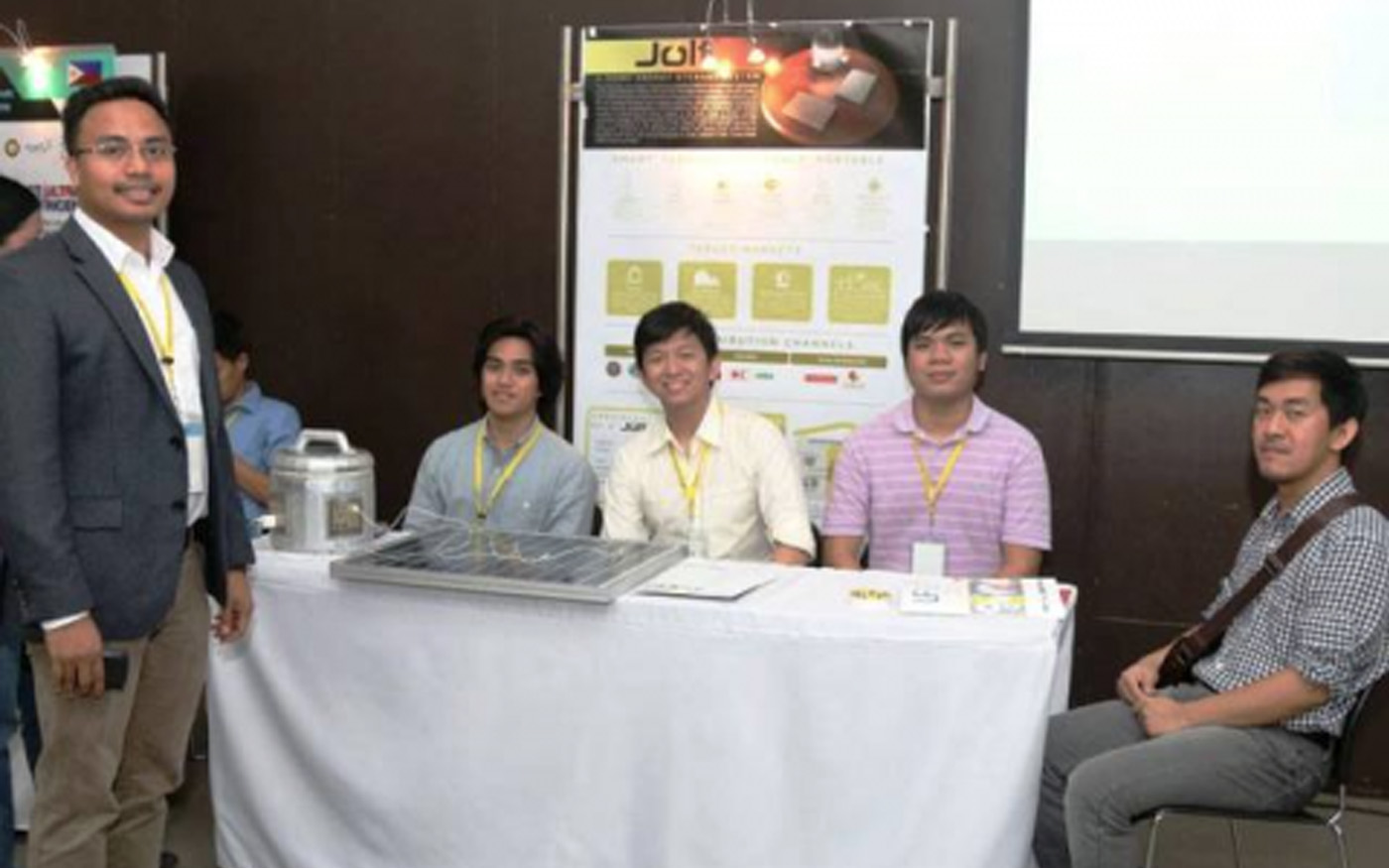The Philippines’ innovation ranking has risen in the last six years, from 111 in 2009 to 48 at present.
This is according to Department of Science and Technology Undersecretary for Scientific and Technological Services Dr. Rowena Guevara, who spoke at the recent “Demo Day” for 15 fellows of the Leaders in Innovation Fellowship at the Asian Institute of Management in Makati City.
Indeed, Demo Day was proof of innovation in the Philippines, with scientists presenting solutions to improve lives.
The event was organized by AIM, the British Embassy in Manila, and the Royal Academy of Engineering. Through the British Embassy and DOST’s Newton Agham Program, scientific ideas are brought from the laboratory to the market.
Here are some of the projects that stood out:

JAMP ALERT KIT
The Philippines has at least 50,000 hectares of shrimp farms, but the industry declined because of the “white spot syndrome virus”, which was found in China and spread througout the world.
Through Dr. Mary Beth Maningas and her team’s invention, farmers will be able to detect the disease by getting a sample from the shrimp’s swimmers, then put it on the device, and see whether it is positive or negative for the disease within an hour.
Thus, they can decide whether to harvest the shrimp early or to dry their pond out, so that the disease will not spread further.
The team promises that farmers can use the device even without much technical know-how.
JOLT HOME ENERGY STORAGE SYSTEM
With this power storage device, a user can charge his or her laptop ten times, or charge three laptops at the same time for five hours.
The brains behind Jolt, University of the Philippines Diliman Electrochemical Engineering professor Joey Ocon, aims to help power rural areas, particularly those that are not connected to the national grid. This can also be used for emergencies, as well as camping trips, given the LED lamp inside the gadget.
He adds that their device will hasten the Philippines’ transition to renewable energy, as Jolt can be charged through either a wall charger, or solar panels.

GINHAWA VENTILATOR
Is it possible to get a Mercedes-Benz at the cost of a Kia? The developers of the Ginhawa ventilator think so, as it costs hundreds of thousands of pesos less than standard ventilators used in hospitals, while having similar properties.
In the Philippines, ten patients in intensive care have to share one ventilator, according to Dr. Abundio Balgos, a lung and critical care specialist who heads the UP Manila and De La Salle University teams which collaborated to develop Ginhawa. Meanwhile, half of ICU patients need a ventilator to survive.
Hospitals fail to acquire enough ventilators because of the cost.
Ginhawa hopes to remedy that. It has been in development for more than 20 years, and will now undergo human safety and effectivity studies at the Philippine General Hospital.
Balgos targets a production of 100 units for the first year, as they have already identified a manufacturing partner. But they need P20 million as an initial fund.
Hospitals have rental and lease-to-own options for Ginhawa. As for Balgos, he dreams of one day seeing all hospitals in the Philippines having at least one ventilator of their own.
KANINYUMANGGI STABILIZED BROWN RICE
Brown rice is high in dietary fiber, which makes consumers to feel full faster. Eating it is an easy way to get micronutrients that they lack.
But ordinary brown rice has a short shelf life, a hard texture, and needs longer cooking time.
Through stabilization technology, these properties are remedied.
More consumers can enjoy this brown rice, sourced from Nueva Ecija. As technology generator Rosemarie Garcia says, “Kaninyumanggi, pagkain ng lahing kayumanggi (Brown rice, the food for the brown race).”

GUAVIDERM
Skin infections which may be mild at first can nevertheless develop complications, such as sepsis and pneumonia. Some can even lead to death.
This is why UP Manila-Institute of Herbal Medicine director Dr. Cecilia Maramba-Lazarte and her team developed a natural anti-bacterial solution for bacterial skin infections made from guava leaves.
Lazarte says she wants to prevent these complications by treating them while they are still mild.
Ahead of clinical trials, they have found that the ointment can kill Methicillin-resistant Staphylococcus aureus (MRSA) “superbugs”, which are normally resistant to common antibiotics.
Guaviderm is also cheaper than what is already in the market.
Lazarte hopes that it will help the Philippine pharmaceutical industry, so that the country can have its own natural antibiotic product.
The leaves are sourced from Los Baños, and Lazarte hopes to provide farmers with a new cash crop.





